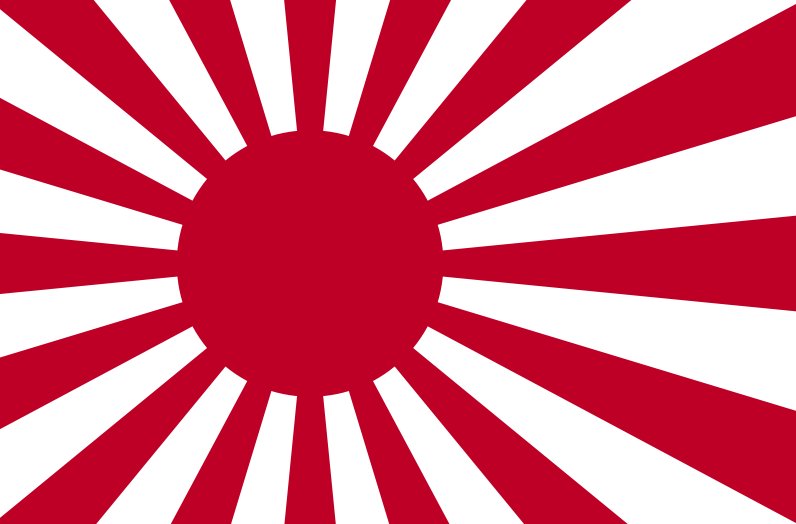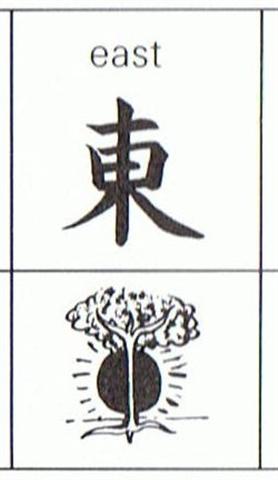5. The idea of hanging something in a tree in order to get it dry again is a key part of the mythic cosmos. Water runs downwards. In our own culture we have flag-poles ('trees') which are used at times of festivity to hoist high our sacred emblems:
Japan is like old Colchis the limit of the world in the east and therefore it is also the land of the Rising Sun. The connection between this idea and the design of its naval flag is obvious. We can count to 16 red and 16 white rays. The Sun is red which in myth means 'great'. In Te Pito I have tried to explain some connections between the colour red, east, the rising sun, and a tree: ... The sign for 'east' in Japanese (and also in Chinese of course) is interesting in this context, because at some point early in the history a mistake may have been done, from whence the sign was considered to depict the rising Sun behind a tree. A beginner's course in Japanese, for instance, explains it so:
But Kenneth G. Henshall in his A Guide to Remembering Japanese Characters knows better: Usually explained incorrectly as sun rising behind trees to indicate dawn and thus east, an error of many centuries' standing. Very old forms reveal that is is a tied sack with a pole thrust through to facilitate carrying, and in that regard it is in the same group as bundle and select / open bundle ... The error seems to stem from a reasonably early form in which the ends of the binding have become separated from the sack, thus suggesting the early form of tree / wood. It is not clear whether this is a simple copying error, an attempt to refer to the wooden nature of the pole, or a mistaken interpretation of the elements as sun and tree. In any event, from an early stage [it] was borrowed phonetically to express east. Some scholars feel that it also lent an idea of thrusting through (i.e. the pole through the binding) and thus by extension suggested the sun thrusting up through the horizon, giving dawn and hence east ... Maybe the glowing head of Old Sun was carried inside a sack when he was being transported across the 'waters' of the nightside, then to be released again from his bindings in the early morning of the east. And the carrying pole which had been thrust through the bundle could then serve another purpose, viz. to penetrate 'the dark cloth' (which had been used to wrap him up) ... The 'person', who is hung up in the 'tree' in order to dry, has just been born, it is a baby (aka-tyan in Japanese means baby and literally 'the little red one'.) However, the ancient Egyptians - 'who had got it all wrong' - depicted the lifting up of the baby sun from the primeval waters as the effect of 2 limbs instead of a single one:
The water dots invite us to count, and one of several possible structures is:
22 is here needed in the 2nd group, but 46 + 22 = 68. The mountain top at left has zero, and this fact could mean we should add 16 + 22 + 14 to reach 52 (= 364 / 7) - with 22 as its center:
2 * 52 + 33 = 137 = 2 * 68 + one more. After having been born the Son of the Lion is suspended high in order to be dry - otherwise he cannot burn - but at the time of Jason this 'garment' of Sun had been transformed to the hide of a Ram. |
|||||||||||||||||||||||||||||||||||||||||||||||||||||||||||||||||||||||||||||||||||||||||||||


